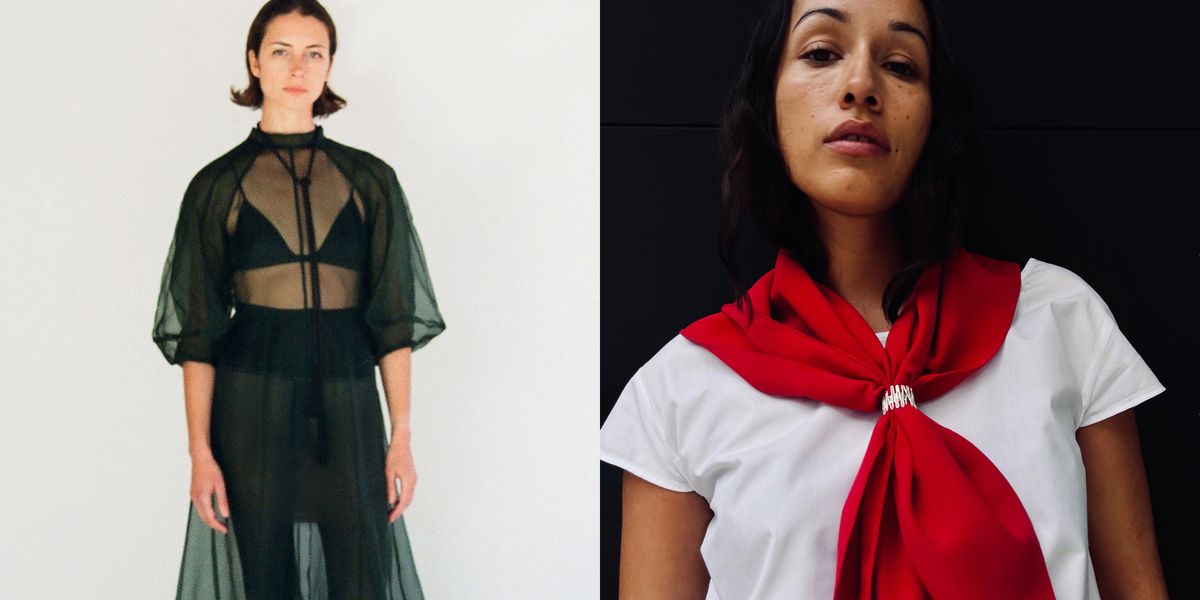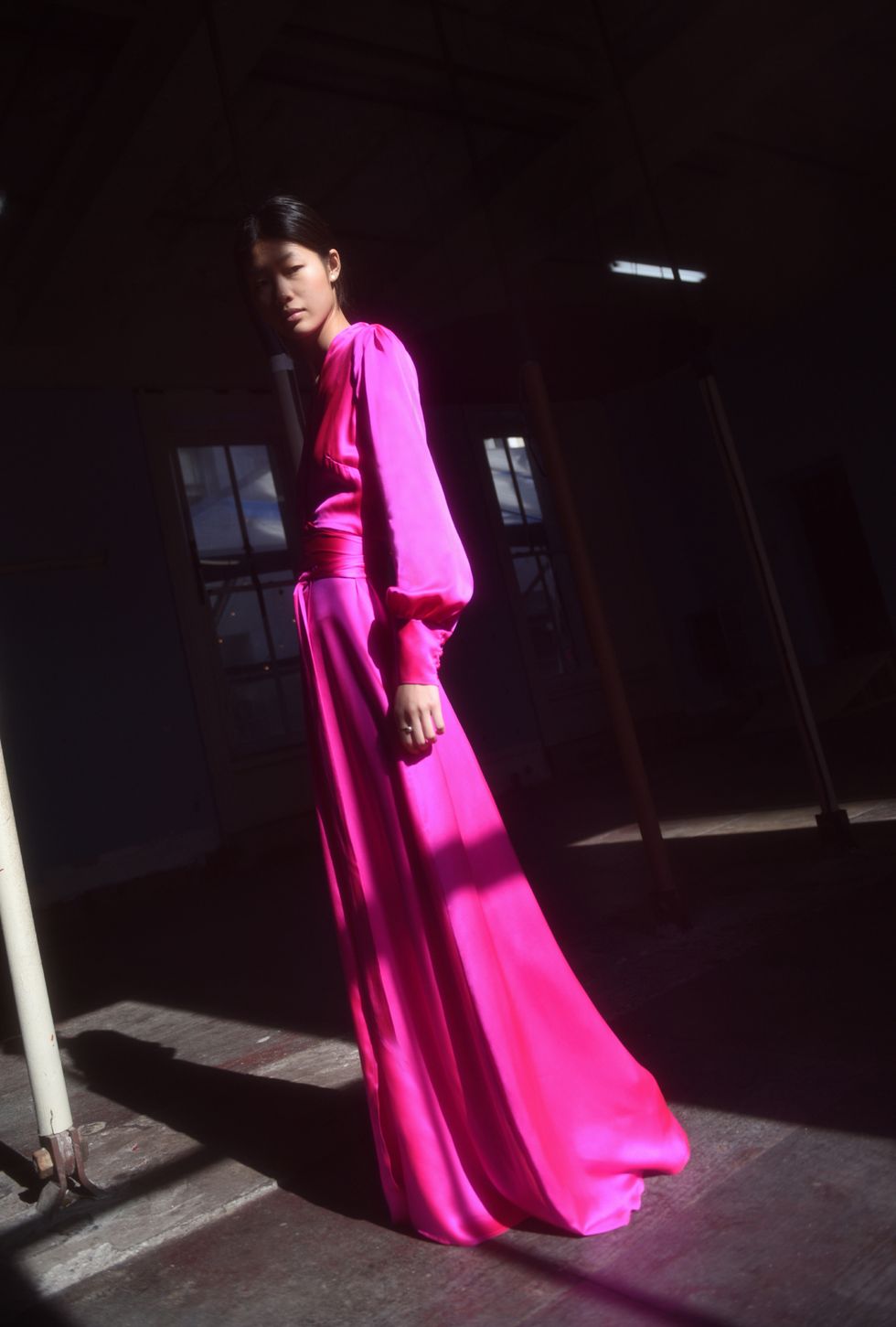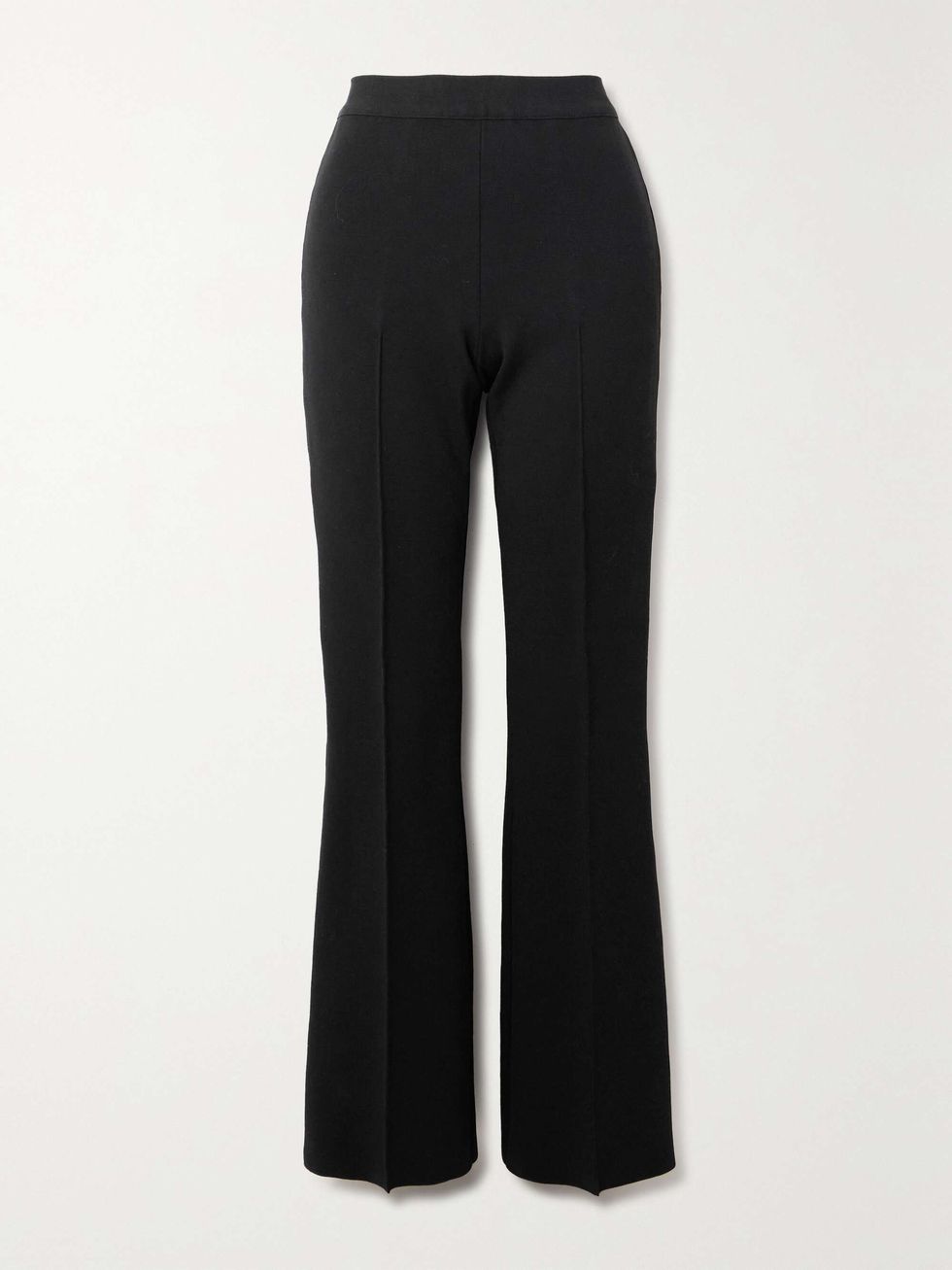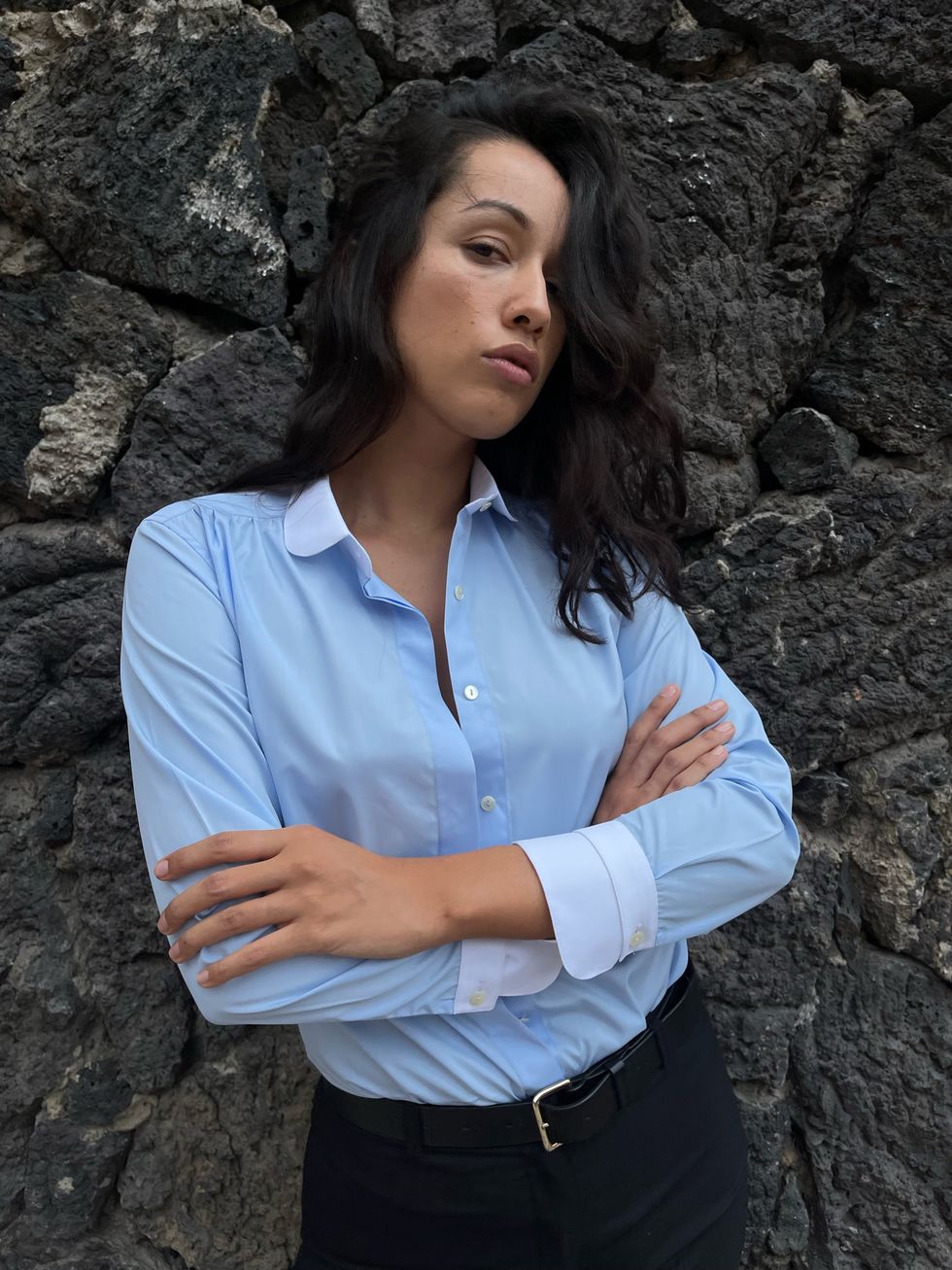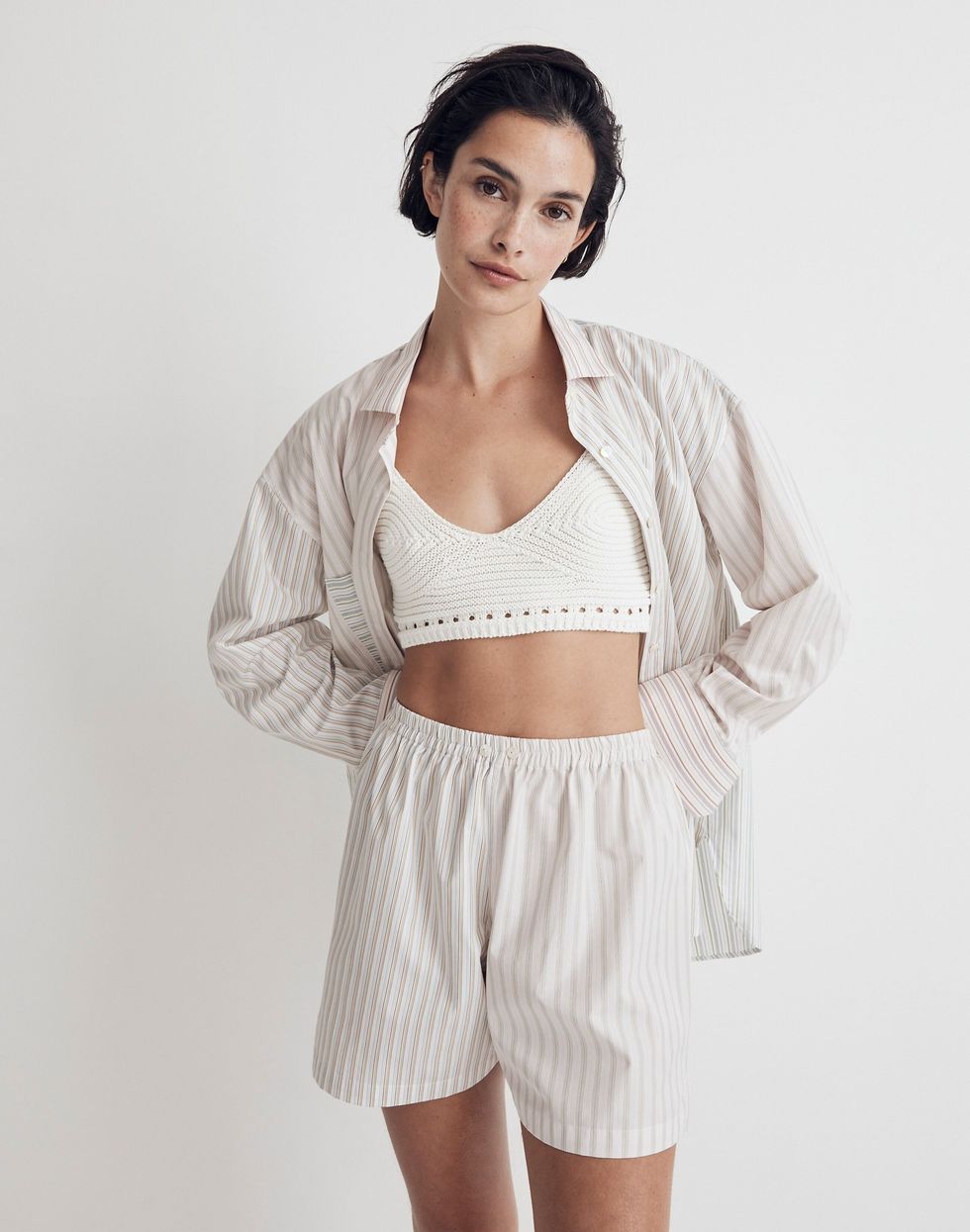Products You May Like
On a recent morning, Anna Chiu, co-founder of the womenswear brand Kamperett, received an email from somewhere over the Pacific Ocean. An acquaintance from a few years back was on a flight to San Francisco, where she’d be hosting a TED Talk. Noticeably nervous and wanting to look and feel her best, her first order of business once she landed was an appointment at Kamperett’s design studio in the city’s Mission District to find a dress.
For the uninitiated, Kamperett represents a growing crop of emerging designers who are refreshing the idea of luxury fashion by simply committing to making one uniquely great product. Focused on small-batch releases, word-of-mouth growth, personalized fittings, and luxurious textiles, these cult brands have begun to garner a grassroots following of women drawn to high-quality design and easy wear, as opposed to the name on the label.
“We tried to make something really great, and it created a space in the market,” Alissa Zachary, founder of the sportswear label High Sport, tells ELLE.com. “Product comes first. Create something really great, and then it will meet a need.” And so the cult of the luxury hero item was born.
Building the Cult
At $890, High Sport’s Kick pants command the same price as styles from The Row or Dries Van Noten, but Zachary describes her product as a direct reflection of the time and availability of materials. The fabric itself took four years of development, and each pair of pants takes five hours to knit and two to construct.
She highlights the Kick Pants’ power to replace multiple styles in a customer’s wardrobe, an idea she refers to as “less but better.” While the pants are an investment, the ease and comfort of the stretchy pull-on silhouette has created a demand for bold colors and neutrals alike.
“We frequently hear of people who own multiple pairs of High Sport pants,” she says. “That’s an incredible testament to the value—there are not many things that cost almost $900 that people own in multiples.”
And while the buzz for High Sport may currently be tied to the pants’ viral success, they’re also a gateway into the material and design for the brand as a whole. It’s the first step to creating a lasting connection with the customer.
“Alissa is smart; she knows she knows she can’t build a company on one single item,” adds Emily Holt, who founded the San Francisco Bay Area boutique Hero Shop. “We sell out of her pants ridiculously quickly, and those same clients trust her and they trust the quality. They have also bought her sweaters, T-shirts, jackets, and other items.” Once they discover that a brand does one thing really well, customers want to keep coming back, and bringing their community in on the secret, too.
Word of Mouth
The luxury fashion space can often be a pay-to-play environment where major conglomerates have the upper hand, sometimes devoting six-figure marketing budgets to advertisements or product placements on Instagram. For a tiny upstart, devoting money to marketing just isn’t an option.
Instead, the clothes have to speak for themselves. “I like when people come into the store and have heard about us from their friend in New York or their sister,” Chiu says. Local trunk shows, community events, and engaging with followers over social media have helped to create a connection that goes beyond the usual brand and shopper transaction.
Capturing that intimate relationship with the customer has become increasingly important for designers trying to attract a top-spending client. Retailer Net-a-Porter reported that EIPs (extremely important people) make up just 2 percent of its customers, but make up 42 percent of sales. The customer service that attracts such clients comes naturally to these smaller luxury brands, and acts as a direct line to the women buying their clothes.
“When I have people come to the showroom, appointments tend to be pretty long,” says Olivia Villanti, founder of the Mexico City-based Chava Studio. “We talk a lot about how they want things to fit and where they want things to hit. To me, that is luxury.”
Retail partnerships are another important piece of the puzzle, connecting smaller brands to their respective communities across the country and offering a chance for customers to touch and try on pieces in person. “I’m not selling a commodity; my clients don’t need anything. But we all want things,” Holt explains. The former fashion editor opened her multi-brand designer boutique in 2016, and has created a home in SF for clients to be introduced to emerging labels like E.M. Reitz, Attersee, and High Sport. “We enjoy fashion and we want new clothes so that we feel relevant in terms of what’s happening socially and culturally.” Sharing a discovery over DM or turning a friend onto the perfect-fitting shirt is its own form of social currency.
Holt sees herself as a guide for clients, speaking to the technical and emotional value of a pair of pants or a new blazer, and showcasing a crop of designers that may not be household names, but have a following. In turn, customers have gone on to buy pieces from the same brands over and over again.
Material Instinct
Six months before the pandemic began, Villanti moved to Mexico City after 18 years in New York working as a magazine editor and in marketing for J.Crew and Madewell. Disillusioned with her work in the fashion industry, she found her next chapter closer to home.
Her in-laws had a decades-long history importing textiles in Mexico City, and for the first time, Villanti found herself with access to bolts of sumptuous deadstock fabric and an in-house pattern maker. She began to design button-down shirts without any real plan, focused on material and thoughtful details.
“Once people purchase from us, they’re obsessed with the fabric, and it’s so hard to translate that online,” Villanti says. “Fabric is funny, because it’s so commercialized. You can create a really beautiful finish; when you get it, it actually feels really nice. But then you wash it and that magic is gone.” Villanti’s fabrics not only hold up over time—they’re made to wear in, transforming something stiff like a pressed shirt into the everyday essential you reach for time and time again.
Alas, quality and attention to detail can be ephemeral concepts, difficult to capture through e-commerce descriptions or Instagram photos. High-touch customer service is the superpower that can help explain exactly what goes into making these garments. “If you email us, you almost exclusively get responses from me directly,” Villanti admits. “Our customers are really curious; they’re interested in how we work, in understanding our fabrics, and the differences between the fits and cuts of the shirt. These are things that require a lot of knowledge.”
As these labels look to the future, is it possible to scale such a focused brand without losing the intimacy and magic they’ve managed to cultivate?
“We don’t want to be the next Allbirds or Everlane,” Chiu explains. “We’re not trying to scale to sell. I love this idea of how it used to be: There’s a clothesmaker who goes to different towns and measures everyone, makes their dresses, and then they wear that dress for a long time.” Including, perhaps, to a TED Talk.
